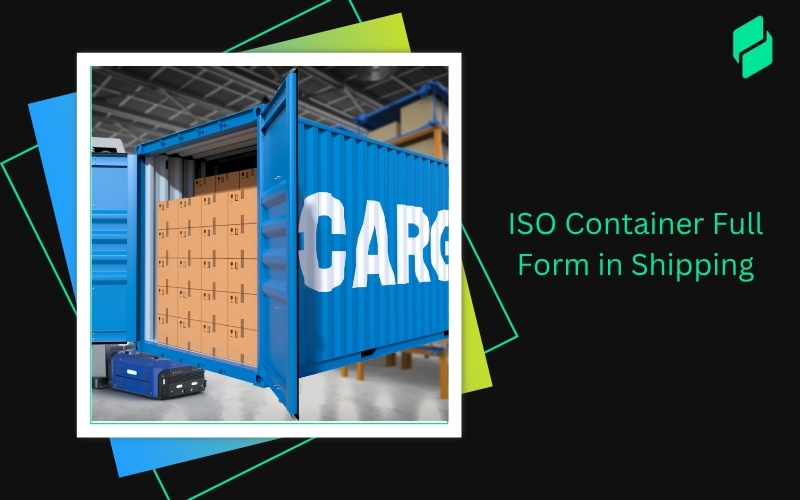In 2024, cargo planes are at the forefront of global logistics. The air freight market is booming, expected to reach a staggering $133.47 billion by 2030 from $66.6 billion in 2021, growing at 10.3% annually.
Air transport has become the top choice for industries worldwide, offering speed and security. Cargo planes, specially designed for efficient cargo transport, are the backbone of this system.
With air transport leading the way in international logistics, it's crucial to understand the basics of such planes and their role in shaping global commerce. Let's explore the essentials together.
Optimize your business: use unlimited savings with Pazago fulfilled now!
Get Started ->What is a Cargo Plane?
A cargo plane, also known as a freighter aircraft, is a specialized aircraft designed primarily for the transportation of goods and cargo. Unlike passenger planes, such carrier planes are configured with spacious interiors to accommodate various types of freight, ranging from perishable goods to oversized machinery.
Why It Matters: Such planes play a pivotal role in global supply chains, facilitating the timely delivery of goods across vast distances.
According to the International Air Transport Association (IATA), air freight represents approximately 35% of world trade by value, underlining the significance of such planes in modern commerce.
Brief History and Evolution
The history of such planes traces back to the early 20th century when converted military aircraft were first used for commercial freight transport.
Over the decades, advancements in aviation technology led to the development of purpose-built cargo aircraft capable of carrying heavier loads over longer distances.
The introduction of the Boeing 747 freighter in the 1970s revolutionized air cargo operations, offering unparalleled capacity and efficiency.
Today, manufacturers like Airbus and Boeing continue to innovate, producing cutting-edge cargo aircraft such as the Airbus Beluga and the Boeing 777F.

3. Overall Importance in Global Trade and Logistics
- Efficient Transport: Such planes expedite the movement of goods across borders, making international trade faster and more accessible.
- Quick Delivery: They offer fast delivery options, crucial for perishable and time-sensitive goods, ensuring products reach markets promptly.
- Supply Chain Support: Such planes help maintain efficient supply chains by ensuring timely delivery of components and products, benefiting industries like manufacturing and pharmaceuticals.
- Economic Growth: Their role in facilitating trade fosters economic growth by encouraging foreign investment and creating job opportunities.
- Global Connectivity: Such kind of planes connect distant markets, promoting globalization and enabling businesses to access new opportunities worldwide.
Types of Cargo Planes
In the realm of cargo aviation, understanding the diverse types of such planes is essential for efficient freight transportation.
1. Standard Cargo Planes vs. Converted Passenger Planes
Standard planes, purpose-built for freight transport, offer optimized cargo space and loading capabilities. They are designed from the ground up to accommodate various types of cargo efficiently.
On the other hand, converted passenger planes, as the name suggests, are commercial airliners modified to carry cargo. While they may lack the dedicated features of standard planes, they provide flexibility in fleet utilization.
For example, the Boeing 777-300, a big converted passenger plane, can carry up to 21,000kg of cargo along with a full load of up to 442 passengers in a two-class setup.
2. Large-Capacity Freighters for Heavy and Oversized Cargo
Large-capacity freighters, such as the Boeing 747 and the Airbus A380F, are designed to handle heavy and oversized cargo. These behemoths of the skies boast impressive payload capacities greater than 80 tons making them ideal for transporting bulky goods across long distances.
Their ability to accommodate outsized shipments contributes significantly to the logistics industry's capability to handle diverse cargo requirements efficiently.
3. Features Specific to Different Types of Cargo Planes
Each type of plane comes with its unique set of features tailored to meet specific operational needs. From specialized loading systems to temperature-controlled cargo compartments, these features ensure the safe and secure transport of goods.
Understanding the distinct characteristics of different planes enables logistics professionals to select the most suitable aircraft for their cargo requirements, optimizing efficiency and cost-effectiveness.

Key Features of Cargo Planes
These planes are equipped with specialized features essential for the efficient and secure transportation of goods worldwide.
1. Cargo Handling Systems and Loading Equipment
- Cargo handling systems streamline loading and unloading.
- Systems include conveyor belts, pallet loaders, and forklifts.
- Ensures swift and organized transfer of goods, minimizing turnaround times.
2. Specialized Cargo Holds: Temperature Control, Pressure Settings
- Cargo holds are equipped with temperature control and pressure settings.
- Crucial for transporting sensitive cargo like perishables and pharmaceuticals.
- Maintains optimal conditions, ensuring cargo arrives in pristine condition.
3. Safety and Security Features for Cargo Transport
- Robust safety and security features protect cargo during transit.
- Includes secure locking mechanisms, surveillance systems, and tamper-evident seals.
- Prevents damage, theft, and tampering, instilling confidence in customers and partners.
Major Cargo Plane Models and Their Capabilities
Explore the key such plane models shaping the logistics industry and their impressive capabilities in 2024.
Operational Aspects of Cargo Planes
This refers to the various elements involved in the functioning and management of these aircraft during their day-to-day operations.
This includes everything from flight planning, cargo handling, and logistics operations, to fuel efficiency, and adherence to regulatory requirements.
1. Flight Planning and Regulations
This involves planning flight routes and considering factors like weather, air traffic, and fuel efficiency. Such planes must adhere to strict regulations set by aviation authorities to ensure safety and compliance.
2. Cargo Handling and Logistics Operations
Such planes are responsible for transporting goods of various types and sizes. Cargo handling involves loading, unloading, and securing freight efficiently.
Logistics operations ensure coordination between ground staff, pilots, and air traffic controllers to optimize cargo flow.
Cargo handling reduces turnaround times and enhances operational productivity, crucial for meeting customer demands.
3. Fuel Efficiency and Environmental Considerations
Fuel efficiency is crucial for such planes to reduce operating costs and environmental impact.
Modern such planes are designed with fuel-efficient engines and aerodynamics. Considerations for environmental sustainability drive innovation in sustainable aviation fuels and eco-friendly practices.
Innovations in Cargo Plane Design and Operation
Advancements and improvements represent changes made in the structure, technology, and processes involved in the manufacturing, maintenance, and use of cargo aircraft.
These innovations aim to enhance efficiency, safety, and sustainability while meeting the evolving needs of the global logistics industry.
1. Technological Advancements for Enhanced Performance
Innovative technologies are reshaping such plane capabilities, and enhancing performance, and operational efficiency.
Surprisingly, such plane operations have evolved due to technological advancements. For instance, the weight of smartphones transported by aircraft has decreased by over 50% due to their sleeker designs. This reflects changes in consumer electronics and the demand for efficient transportation.
Additionally, the widespread use of smart technology in households highlights the significant demand for technology imports and exports. These changes underscore the need for such planes to adapt to evolving technology and consumer preferences.
2. Eco-Friendly Initiatives and Sustainable Aviation Solutions
In response to environmental concerns, the cargo aviation industry is embracing eco-friendly initiatives and sustainable solutions.
Sustainable aviation fuels (SAFs), derived from renewable sources, are gaining traction. According to the International Air Transport Association (IATA), SAFs can reduce carbon emissions by up to 80%.
Moreover, companies are investing in lightweight materials and aerodynamic designs to minimize environmental impact while maintaining operational efficiency.
3. Future Prospects: Unmanned Goods Planes and Digital Integration
The future of cargo aviation holds promising prospects, including the development of unmanned such planes and digital integration.
Unmanned aerial vehicles (UAVs) are being explored for cargo transport, offering cost-effective and flexible solutions. Moreover, digital integration of systems and processes enhances operational agility and data-driven decision-making.
With advancements in artificial intelligence and automation, the cargo aviation industry is poised for transformative growth and efficiency in the years ahead.
Impact of Carrier Planes on Global Trade

Discover how such planes shape global trade, economies, and humanitarian efforts.
1. Role in Expedited Delivery
- These planes swiftly transport goods worldwide.
- About 35% of global trade value relies on air freight.
2. Contribution to Economic Growth
- These planes help businesses access international markets.
- Air transport connectivity correlates with economic development.
- Industries like manufacturing and pharmaceuticals benefit from these planes, fostering economic growth.
3. Importance in Humanitarian Aid
- These planes are essential for global trade, offering fast delivery for time-sensitive goods. One crucial role they play is delivering vaccines, saving 2.5 million lives yearly.
- This highlights their importance in public health. Such planes ensure vaccines reach destinations quickly, maintaining their effectiveness.
Challenges Facing the Cargo Plane Industry
Challenges facing the such plane industry encompass a range of issues that hinder operational efficiency, safety, and profitability. These challenges include
- Security Threats and Risk Management: Such planes are susceptible to terrorism, smuggling, and theft, necessitating robust security measures and risk management strategies.
- Navigating Airspace Regulations and Restrictions: Such planes must comply with strict airspace regulations and manage congested airspace, especially with the increasing presence of unmanned aerial systems (UAS).
- Adapting to Changing Market Demands and Economic Factors: Fluctuations in fuel prices, trade policies, and economic conditions affect cargo demand and profitability, requiring cargo operators to adapt their services and operations accordingly.
Conclusion
In summary, cargo planes in 2024 may face security threats, airspace regulations, and economic fluctuations.
However, they remain pivotal in global trade and humanitarian aid. As the industry innovates and adapts, advancements in technology and sustainable practices offer promising prospects.
According to the IATA, global air freight volumes continue to rise, underscoring the enduring significance of cargo planes.
Looking ahead, the industry is poised to continue driving progress and delivering value in the evolving realm of global transportation.


.png)








